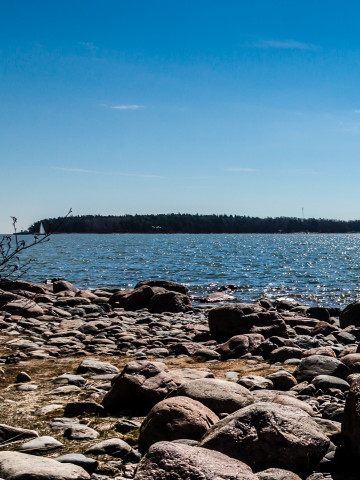
Sustainable Coastal Management
Students in the Degree Programme "Sustainable Coastal Management" writes about their studies and share their thoughts on different environmental issues.
Local Food Fish Production

I heard, Finnish people love to consume fish. In Bangladesh a proverb goes that “Fish and rich make a Bengali”, we understand the value of fish. Having Baltic Sea is the most beneficial site as a fish resource. Finland has over 5,000km of coastline and around 10% of the country’s surface is covered by water. Moreover, local produced fishes are definitely a healthy choice. Nowadays, in Finland there are many fish farms aimed to provide local produced nutritious fishes. The total consumption is about 15 kg per capita per annum which is not satisfied. Though the regulations are strict regarding fish farming, the production volume would be extensive in future. Let’s talk about local food fishes.
The most famous cultured fish is Rainbow Trout. Among the 95% of the fish farmed for food in Finland is rainbow trout. In the 1970’s Finland started the culture program. This fish contains a lot of vitamin E12 and D, omega-3 fatty acid. Because of reasonable prices this species has its own marketplace. The production amount is around 10 to 12 million kilos per annum.
From the beginning of the 21st century Finland started to culture the white fish. As this fish is available all the season, it is famous differently. The farming technique is similar to rainbow trout but white fish requires more professional skills as a sensitive species.
Pike perch, this species is only valuable in Finland, but also worldwide. The attractive facts about this fish are low fat and boneless. This species requires warm water for culture. It grows at double speed in warm water than natural water.
As pike perch, another famous boneless fish is Sturgeon. This fish contains very low fat and is a popular choice for barbeque. The sturgeon eggs are known as luxury seafood. The interesting part is this fish is called a living fossil.
There are also other fishes like arctic char or trout in Finland. There are diverse sorts of production facilities. The composition of the facilities depends on the water area and the species to be raised. If we talk about offshore culture, it has challenges like ice cover in winter or water waves. So, this type of farming requires stronger frames, cages, anchorage and modern technologies.
There are diverse sorts of production facilities. The composition of the facilities depends on the water area and the species to be raised. If we talk about offshore culture, it has challenges like ice cover in winter or water waves. So, this type of farming requires stronger frames, cages, anchorage and modern technologies.The fish farmer's professional skills guarantee high quality farmed fish because; only qualitative fish can produce healthy food.
Sustainable Coastal Managment
Students in the Degree Programme "Sustainable Coastal Management" writes about their studies and share their thoughts on different environmental issues.
Disclaimer: The author(s) are responsible for the facts, any possible omissions, and the accuracy of the content in the blog.The texts have undergone a review, however, the opinions expressed are those of the author and do not necessarily reflect the views of Novia University of Applied Sciences.